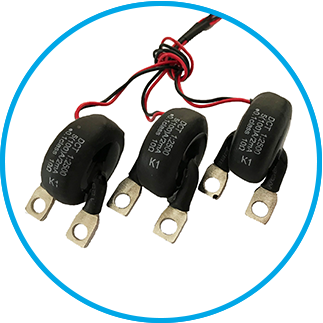Summary:There are many types of relays, so how do we classify them? Here we will classify them according to ...
There are many types of relays, so how do we classify them? Here we will classify them according to the working principle, product use, external dimensions, protection features, contact loads, etc. of magnetic latching relays:
1. Classify according to the principle of action of relays
1. Electromagnetic Relay
Under the action of the current in the input circuit, a relay produces a predetermined response by the relative movement of the mechanical parts.
It includes DC electromagnetic relays, AC electromagnetic relays, magnetic latching relays, polarized relays, reed relays, and energy-saving power relays.
(1) DC electromagnetic relay: the electromagnetic relay whose control current in the input circuit is DC.
(2) AC electromagnetic relay: an electromagnetic relay whose control current in the input circuit is AC.
(3) Magnetic latching relay: The magnetic steel is introduced into the magnetic circuit. After the relay coil is de-energized, the armature of the relay can still remain in the state when the coil is energized, with two stable states.
(4) Polarized relay: a DC relay whose state changes depending on the polarity of the input excitation.
(5) Reed relay: a relay that uses the action of a reed sealed in a tube and has the dual functions of a contact reed and an armature magnetic circuit to open, close or switch circuits.
(6) Energy-saving power relay: The control current in the input circuit is an AC electromagnetic relay, but its current is large (generally 30-100A), small in size, and power-saving function.
2. Solid State Relay
A relay whose input and output functions are completed by electronic components without mechanical moving parts.
3. Time relay
When the input signal is added or removed, the output part needs to delay or limit the time to close or open the relay of its controlled circuit until the specified time.
4. Temperature relay
A relay that operates when the outside temperature reaches a specified value.
5. Fan speed relay
When the wind speed reaches a certain value, the controlled circuit will be turned on or off.
6. Acceleration relay
When the acceleration of the moving object reaches the specified value, the controlled circuit will be turned on or off.
7. Other types of relays
Such as photo relays, acoustic relays, thermal relays, etc.
Second, according to the use of relay classification
Communication relays (including high-frequency relays) The load range of this type of relay contact is from low level to medium current, and the environmental conditions are not high.
Machine tool relays The relays used in machine tools have large contact load power and long life.
Relays for household appliances The relays used in household appliances require good safety performance.
Relays used in automobiles, these relays have high switching load power, high shock resistance, and high vibration resistance.
Three, according to the size of the relay to classify
Miniature relays whose longest side dimension is not more than 10mm
Subminiature relays whose longest side dimension is greater than 10mm, but not greater than 25mm
Small relays whose longest side dimension is greater than 25mm, but not greater than 50mm
Fourth, according to the relay contact load classification
Micropower relays are less than 0.2A relays.
Weak power relay 0.2 ~ 2A relay.
Medium power relay 2 ~ 10A relay. High-power relays above 10A.
Energy-saving power relay 20A-100A relay
Fifth, classify according to relay protection characteristics
Sealed relays use welding or other methods to seal the contacts and coils in a metal cover, and the relays have a low leakage rate
The plastic encapsulated relay adopts the method of encapsulation to seal the contacts and coils in the plastic cover and the relay with a high leakage rate
Dust Cover Relay A relay in which the contacts and coils are enclosed and protected by a cover
Open relays Relay that does not use protective covers to protect contacts, coils, etc.

